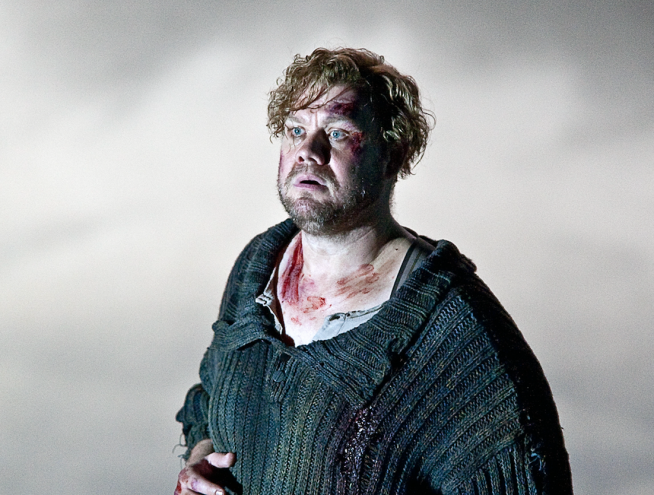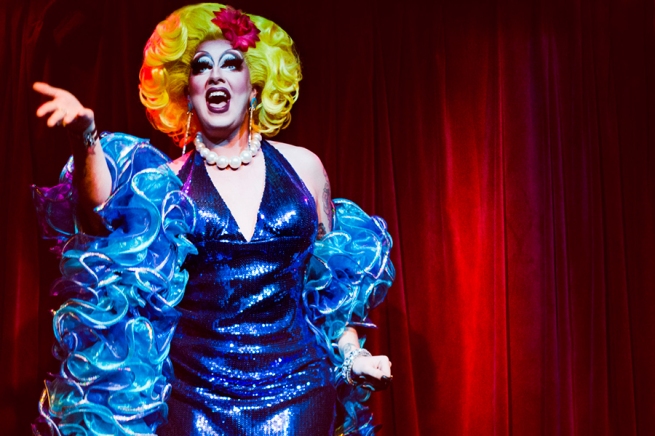Dust
Dancenorth & Liminal Spaces
Brisbane Powerhouse Theatre
September 19 – 22 2018
Reviewed by Ruth Ridgway
Upon birth, we arrive into a world in which those who precede us determine everything.
From this lottery of birth we inherit the architecture of both restriction and opportunity in countless manifestations. Structures, barriers and borders pre-exist, and past tense illuminates both our present and future thinking…
Dancenorth
Dancenorth’s work Dust premiered at this year’s Brisbane Festival. It is inspired by weighty and solemn concepts, outlined by directors/choreographers Kyle Page (Dancenorth’s Artistic Director) and Amber Haines (Associate Artistic Director) in their program notes.
Page and Haines are married and have a baby son, whose birth last year led them to contemplate ‘the architecture of inheritance’, and to think about the present, past and future worlds, and how we shape these worlds and they shape us.
In the post-performance Q&A on opening night, Page referred to the set for Dust, designed by Liminal Studio, as ‘another performer’. It dominates this work. At first, a large, wedge-shaped wall looms over the performers. Angled across the stage, it separates one dancer (Ashley McLellan) from the six others (Samantha Hines, Mason Kelly, Jenni Large, Georgia Rudd, Felix Sampson and Jack Ziesing). The themes of barriers, restrictions, insiders/outsiders and inclusion/exclusion continue throughout the work.
The power of the soundscape matches that of the set. Created by composer/sound designer Alisdair Macindoe and Canadian composer/musician Jessica Moss, it surges, booms and pounds, ebbing to quieter moments with sounds like bells, harmonic chanting, droning, and distorted voices calling.
Threading their way among the recorded electronic sounds are echoes of Middle Eastern and Eastern European music. Moss plays the violin live during the show, electronically modifying the sound of her instrument.
Early on, the dancers dismantle the wall into its constituent box-like blocks. As the work progresses, they move the boxes into various configurations: a ramp, a pile of rocks, a low wall around the stage perimeter, and parallel rows of columns.
The action continues with duos and solos while this happens, but shifting the boxes takes up much of the dancers’ time and effort. (The dancer representative at the Q&A, Felix Sampson, confirmed the impression that the blocks are heavy.)
Once the arrangements of blocks are in place, striking images are created by the dancers moving and posing on and round them. A group moves and stands on a ramp, while a lone man creeps alongside. A woman stands and lifts her arm, like a priest or an ancient oracle. A group of dancers bow and abase themselves to a pile of blocks; one woman walks slowly among them and they follow her.
It is as if we are witnessing some ancient ritual in a sacred space. This effect is accentuated by the configuration of the Powerhouse Theatre, with the audience in tiers of seats rising above the stage, as in an Ancient Greek theatre.
The dancers perform heroically, and one can only wonder at their energy. The quality of movement is athletic and grounded, fluid at times and jerky and robotic at others. McLellan in particular impresses with her intensity, strength and fluidity.
The pattern of the movement is full of circles: for example, using the impetus of whirling around in lifts, or rotating on the spot like a dervish, or running in circles, and people circling each other. The group of dancers sometimes huddle in a circle, moving in close action and reaction to each other, like a flock of birds. They also undulate in slow motion, like a group of sea creatures. There is a great deal of floor work.
The lighting (Niklas Pajanti) is subtle, often quite dim, with simple minimal colours that correspond well with the cosmic soundscape and the monumental set – such as gold, and pink strengthening to red. These are the only touches of colour other than shades of grey (for the backdrop, the wall, and the costumes).
The costumes (Harriet Oxley) are lovely. In contrast to the dominating set and the sound, and more aligned with the mood of the lighting, they are delicate and almost transparent. Of fine, pale, lightly patterned fabric, the combinations of tunics, wide pants, long skirts, and sleeveless tops are reminiscent of Ancient Greek or Roman draperies.
The whole creative team was represented on the 9-strong panel for the Q&A (facilitated by Bradley Chatfield, formerly with Sydney Dance Company, and more recently with Dancenorth and the Aboriginal Centre for the Performing Arts). All were very passionate about their particular discipline and about the collaborative process of creating Dust.
The different creative elements in this work all make a powerful impression. However, for me they did not gel as a whole: rather, they seemed to be struggling for dominance, a struggle won by the set. At around 70 minutes, the work is not over-long, but is repetitious in parts.
In the current drought, the title Dust might first suggest clouds of windblown particles of soil. However, on reflection, the biblical idea that we are all made of dust seems more relevant: ‘… out of [the ground] wast thou taken: for dust thou art, and unto dust shalt thou return’ (Genesis 3:19).






















Recent Comments